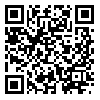Volume 22, Issue 94 (12-2012)
J Mazandaran Univ Med Sci 2012, 22(94): 15-26 |
Back to browse issues page
Download citation:
BibTeX | RIS | EndNote | Medlars | ProCite | Reference Manager | RefWorks
Send citation to:



BibTeX | RIS | EndNote | Medlars | ProCite | Reference Manager | RefWorks
Send citation to:
Niknejad H, Peirovi H. The Effects of Cryopreservation on Epithelial Cells before and After Isolation from Human Amniotic Membrane. J Mazandaran Univ Med Sci 2012; 22 (94) :15-26
URL: http://jmums.mazums.ac.ir/article-1-1425-en.html
URL: http://jmums.mazums.ac.ir/article-1-1425-en.html
Abstract: (16548 Views)
Background and purpose: One of the recent techniques for increasing the output of cryopreservation is using different scaffolds in long-term preservation of stem cells for cell therapy. Undesirable differentiation and decrease in the number of viable cells are two major problems in this process. In order to overcome these problems, in this study the human amniotic epithelial cells were cryopreserved using amniotic membrane as their natural scaffold.
Materials and methods: after tissue preparation and amniotic epithelial cells extraction, the cells were preserved for 12 months in two different groups of with and without scaffold in 24 different patterns in -196°C in liquid nitrogen. The percentage of viable cells and thier pluripotency were determined before and after cryopreservation. Results were compared between groups with ANOVA (Tukey Post-Test) statistics method.
Results: viablility of cells and percentage of Oct-4 positive cells were higher in with scaffold group comparing to without scaffold. The difference between the number of viable cells and pluripotency wasn’t statistically significant between freshly extracted cells and cells that were cryopreserved with scaffold. In addition, glycerol decreased the output of cryopreservation
Conclusion: This study showed that employing of amniotic membrane as a scaffold for cryopreservation of human amniotic epithelial cells could increase the number of viable cells and reduce the amount of undesirable differentiation in the process of cryopreservation
Keywords: Cryopreservation, human amniotic epithelial cells, scaffold, amniotic membrane, pluripotency
Type of Study: Research(Original) |
Send email to the article author
| Rights and permissions | |
 |
This work is licensed under a Creative Commons Attribution-NonCommercial 4.0 International License. |






